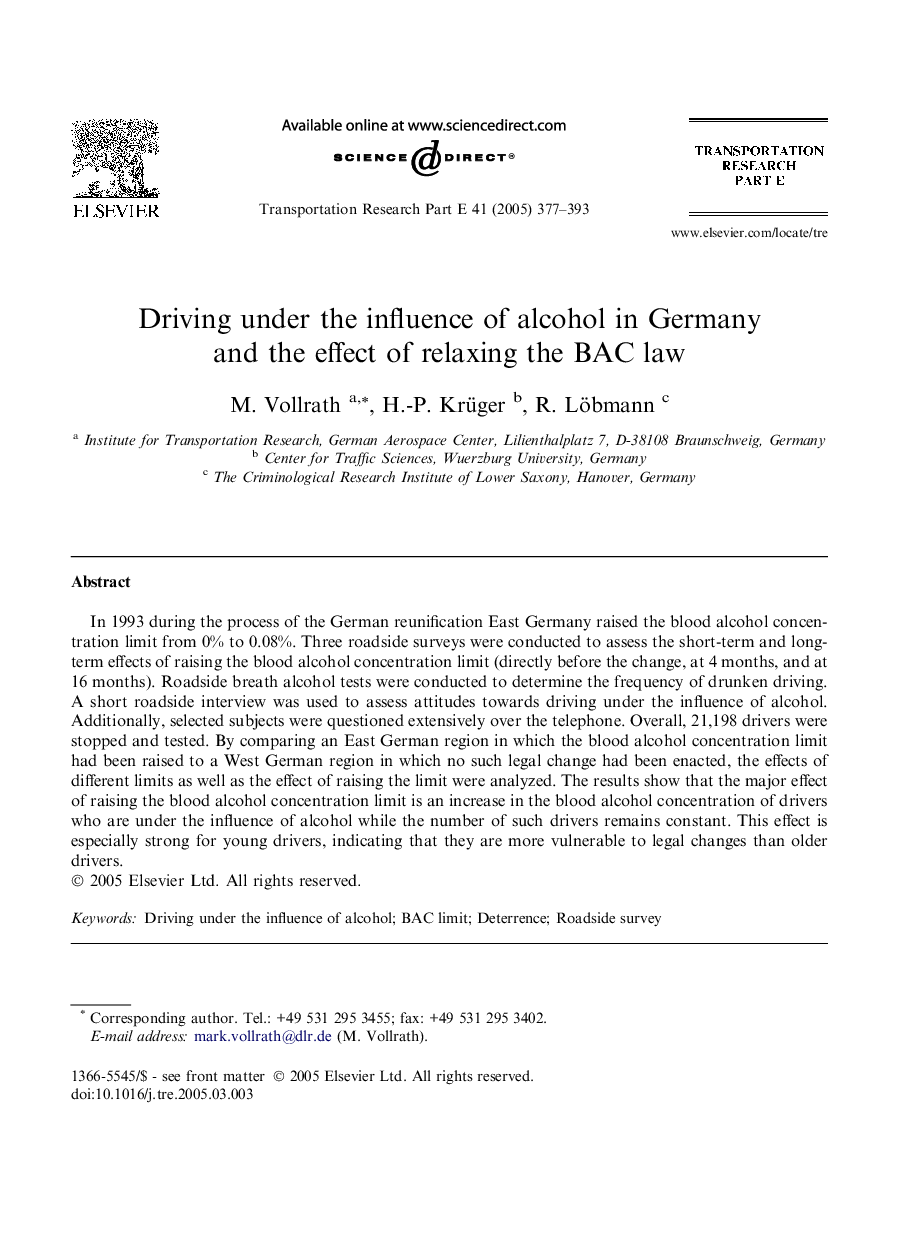| Article ID | Journal | Published Year | Pages | File Type |
|---|---|---|---|---|
| 10495489 | Transportation Research Part E: Logistics and Transportation Review | 2005 | 17 Pages |
Abstract
In 1993 during the process of the German reunification East Germany raised the blood alcohol concentration limit from 0% to 0.08%. Three roadside surveys were conducted to assess the short-term and long-term effects of raising the blood alcohol concentration limit (directly before the change, at 4 months, and at 16 months). Roadside breath alcohol tests were conducted to determine the frequency of drunken driving. A short roadside interview was used to assess attitudes towards driving under the influence of alcohol. Additionally, selected subjects were questioned extensively over the telephone. Overall, 21,198 drivers were stopped and tested. By comparing an East German region in which the blood alcohol concentration limit had been raised to a West German region in which no such legal change had been enacted, the effects of different limits as well as the effect of raising the limit were analyzed. The results show that the major effect of raising the blood alcohol concentration limit is an increase in the blood alcohol concentration of drivers who are under the influence of alcohol while the number of such drivers remains constant. This effect is especially strong for young drivers, indicating that they are more vulnerable to legal changes than older drivers.
Keywords
Related Topics
Social Sciences and Humanities
Business, Management and Accounting
Business and International Management
Authors
M. Vollrath, H.-P. Krüger, R. Löbmann,
